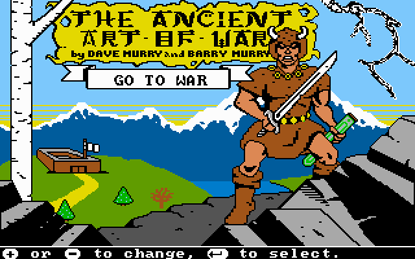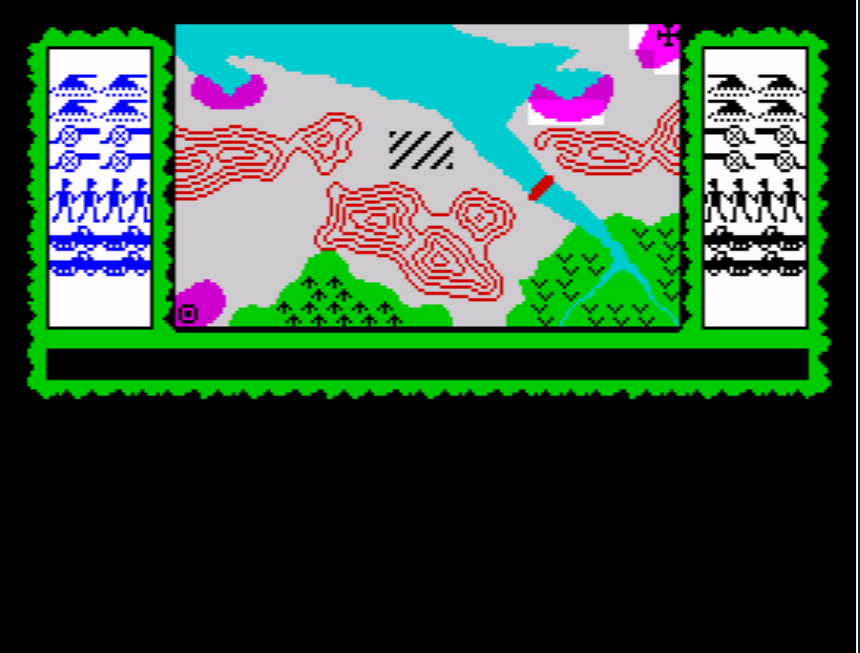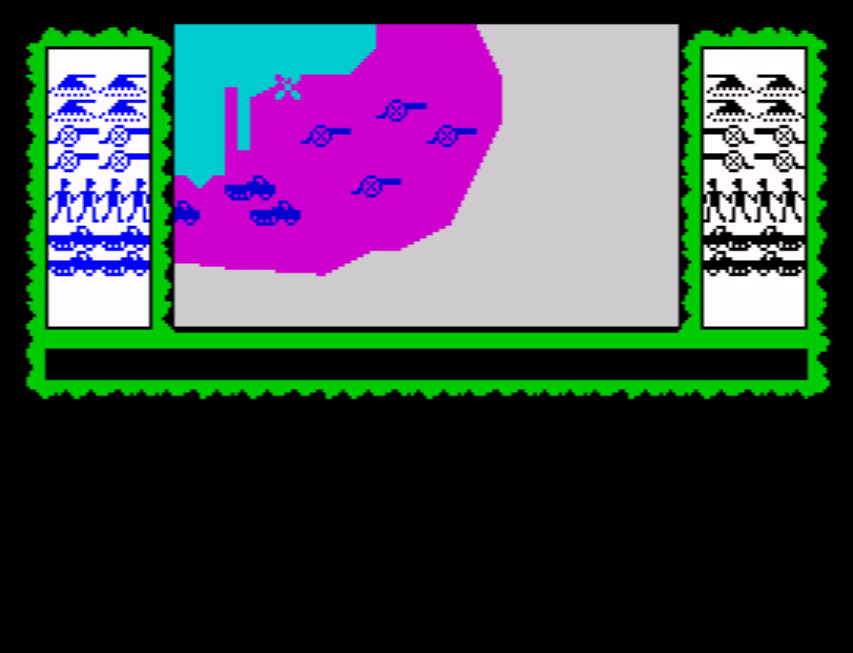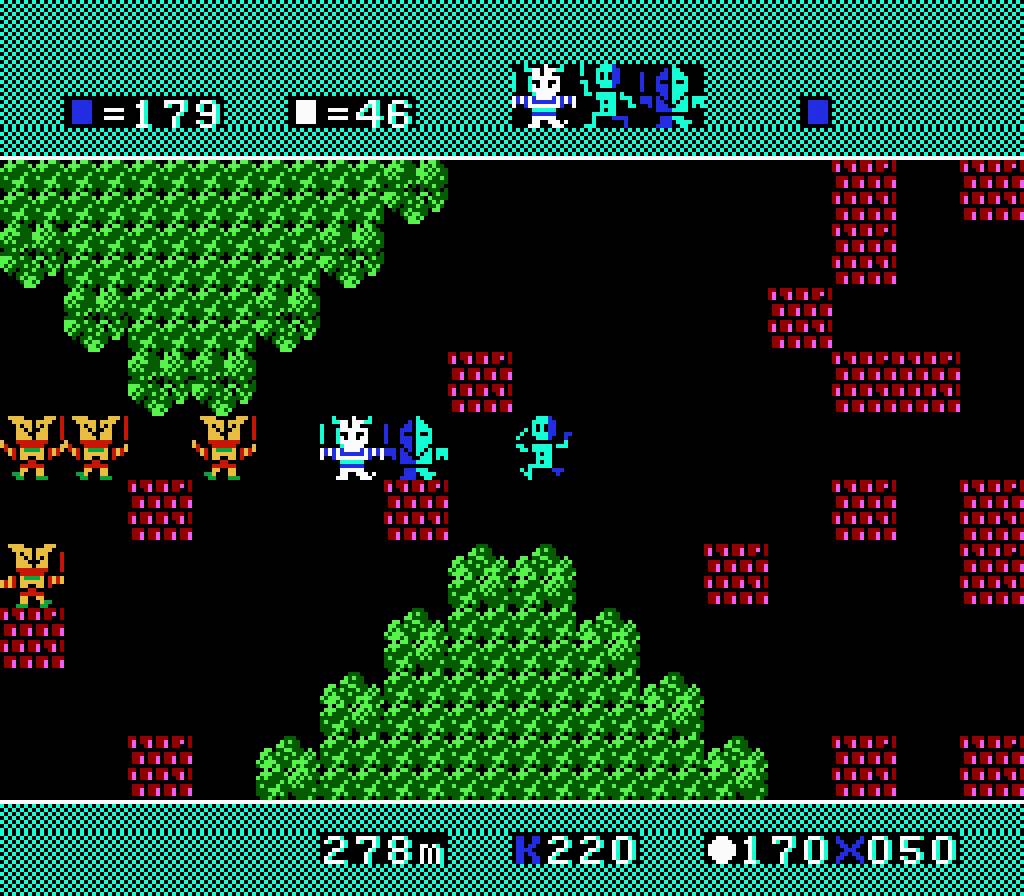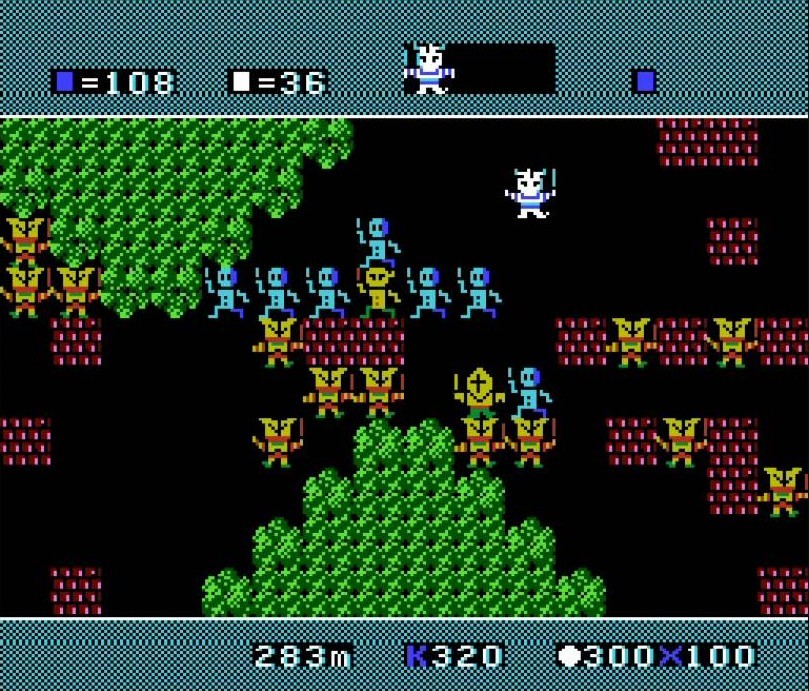Major leap in presentation and depth from its predecessors.
Developed by Evryware and published in 1984. Ancient Art of War introduced a whole slew of innovative features that now accompany most of today’s RTS games. It featured a scenario list of maps, each with its own objective. You could choose which leader to face against, from characters like Athena, or the challenging Sun-Tzu (writer of the Art of War). Even including a map editor for making custom scenarios. It truly broke away from the arcade design principles that plagued many early strategy games in the early 80’s.
Game Structure
You have 11 campaign scenarios to choose from. Each one might have different starting conditions and objectives. Some matches require you to capture a flag, others, to destroy the enemy forces. Each one would also start you off with different units, in different terrains, which might include forts, towns, hillsides, etc… Beyond that, you can also set custom rules for them like supply-line length.
Gameplay
Gameplay consists of a mix of styles. You start with a global view of the map, where you can order individual units to move (units are grouped together like in Company of Heroes or Total War). If two opposing units meet, you can decide to zoom in and control the actual battle itself. The game then switches to a side-view of the two opposing groups, each starting at opposite ends.
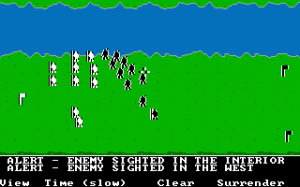
This is the overhead view
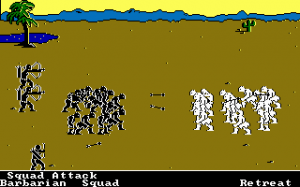
This is the battle view
The units are arranged in a predefined formation that the player can set beforehand, which is pretty cool, and allows you to better setup a tactical advantage. Once the battle starts, you can decide to advance your units by type, retreat, back up, or attack. Units attack in a fashion similarly of that to the Total War games. Once they start attacking, the battle plays itself out, unless one decides to retreat and try to save some units from dying. If all the units in a group die, then you lose that squad, otherwise, you can somewhat replenish them if the rules enabled it. There is also no economy management, which kinda distances the game from the traditional RTS we know.
The actual meta of the units is a simple rock-paper-scissors style balance. Knights counter barbarians, barbarians counter archers, archers counter knights. There are also spies, which don’t attack but move quickly and see farther in the overhead view. Also, the effectiveness of a squad is determined by how well-supplied they are. Being in a village or fort would replenish a hunger value. There is also morale, which Is decreased after every battle. Units will retreat if they feel they are overwhelmed and low in morale and hunger. Moving great distances can tire them. Something really cool about this game is that where the units fight also matters, being uphill grants you bonuses for example. Having archers in a fort means you can attack their knights or barbarians with impunity since they can’t attack through a wall.

Fighting on top of a hill gives you an advantage.
Thoughts
So to summarize, the game has a rock-paper-scissor balance, terrain advantage, formations, macro and micro controls (Like Total War), a map editor, and a dozen single-player scenarios with different generals you can choose to fight (AI behavior change and difficulty). This is an incredible amount of innovation for its time. Not only that, but it couples it with a detailed and polished presentation. Although the control scheme is a little archaic, and it feels slow gameplay wise, I give it props for still being fun for me in 2014.

